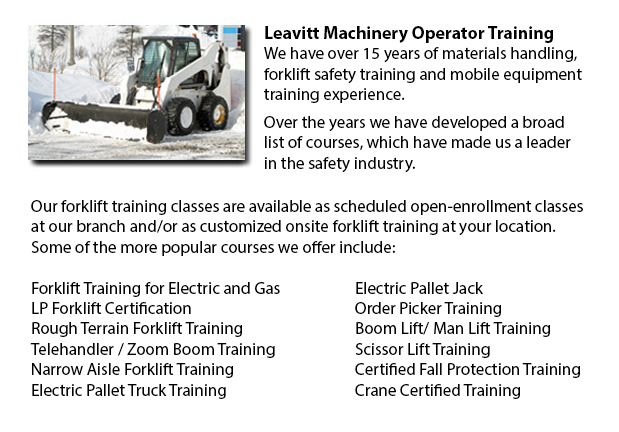
Skid Steer Ticket Saskatchewan - The lift arms on the skid-steer loader are situated alongside the driver together with pivots at the rear of the driver's shoulders. These features makes the skid-steer loader different as opposed to the traditional front loader. Because of the operator's proximity to moving booms, early skid loaders were not as safe as conventional front loaders, especially during the operator's entry and exit. Today's' modern skid-steer loaders have numerous features to protect the driver like fully-enclosed cabs. Similar to other front loaders, the skid-steer model can push materials from one place to another, is capable of loading material into a truck or trailer and could carry material in its bucket.
Operation
Many times a skid-steer loader can be used on a job location instead of a big excavator by digging a hole from the inside. To begin with, the skid-steer loader digs a ramp leading to the edge of the desired excavation, and after that it utilizes the ramp to excavate material out of the hole. As the excavation deepens, the machine reshapes the ramp making it steeper and longer. This is a very useful way for digging underneath a structure where there is not sufficient overhead clearance for the boom of a big excavator. For example, this is a common situation when digging a basement underneath an existing home or building.
The skid-steer loader accessories add much flexibility to the equipment. Like for example, traditional buckets on the loaders could be replaced accessories powered by their hydraulics including backhoes, tree spades, sweepers, mowers, snow blades, cement mixers and pallet forks. Some other popular specialized buckets and attachments include wheel saws, snow blades, trenchers, angle booms, dumping hopper, wood chipper machines, grapples, tillers and stump grinders rippers.
History
In 1957, the very first 3-wheeled, front-end loader was invented in Rothsay, Minnesota by brothers Cyril and Louis Keller. The brothers invented the loader so as to help a farmer mechanize the process of cleaning turkey manure from his barn. This machinery was compact and light and consisted of a rear caster wheel that enabled it to maneuver and turn around within its own length, allowing it to perform similar tasks as a traditional front-end loader.
During the year 1958, the Melroe brothers of Melroe Manufacturing Company in Gwinner, N.D. bought the rights to the Keller loader. They hired the Keller brothers to continue refining their loader invention. The M-200 Melroe was actually the end result of this particular partnership. This particular model was a self-propelled loader which was launched to the market during 1958. The M-200 Melroe featured a a 750 lb capacity, two independent front drive wheels, a rear caster wheel and a 12,9 HP engine. By the year 1960, they replaced the caster wheel with a rear axle and introduced the first 4 wheel skid steer loader which was referred to as the M-400.
The term "Bobcat" is used as a generic term for skid-steer loaders. The M-400 immediately after became the Melroe Bobcat. The M-440 version was powered by a 15.5 HP engine and has rated operating capacity of 1100 lbs. The company continued the skid-steer development into the mid nineteen sixties and launched the M600 loader.
-
Forklift Ticket Saskatchewan
Forklift Ticket Saskatchewan - Pallet jacks and forklifts are both meant for basically the same purpose; to move supplies from one location of your warehouse to another. This is pretty much where the comparison stops however. With the pallet jack, th... More -
Loader Ticket Saskatchewan
Loader Ticket Saskatchewan - Gehl articulated loaders have been made to suit practically any condition. They provide great traction and optimal maneuverability due to a heavy-duty oscillating joint that offers forty five degree rotating angles left a... More -
Forklift Training Programs Saskatchewan
Forklift Training Programs Saskatchewan - Are you searching for work as a forklift driver? Our regulatory-compliant mobile equipment operator training provides instruction in kinds of forklifts, pre-shift check, fuel kinds and handling of fuels, and... More -
Heavy Equipment Operator Classes Saskatchewan
Heavy Equipment Operator Classes Saskatchewan - A heavy equipment operator is an individual who has received the right training in order to operate a particular kind or piece of machinery. There are lots of ways for the operator to undergo training a... More -
Telehandler Training in Saskatchewan
Telescopic handlers usually known as telehandlers for short, are an extremely popular piece of heavy construction equipment. They are usually utilized in the construction and agricultural trades. These equipments have farthest reaching capacity and a... More -
Narrow Aisle Forklift / Order Picker Training / Electric Pallet Jack / Electric Pallet Truck Training in Saskatchewan
A pallet lift is a piece of equipment dedicated in the transporting of pallets of various dimensions and weights. They can be utilized as an attachment for forklifts, cranes and other types of heavy machinery or be applied on their own. Pallet lifts... More -
Operator Safety Training, Re-Qualification Training, In-House Instructor Training in Saskatchewan
Used in just about all industrial construction sites, warehouse operations or boat yards, the lift truck is a very important component so as to help pick up and transfer supplies. The reach feature of a forklift can help improve the applications whic... More -
Aerial Lift Ticket Saskatchewan
Aerial Lift Ticket Saskatchewan - Boom vehicle are often used by phone, cable and utilities firms as they have extended folded arms which are generally folded over the roofs of business vehicles. On the end of the extension of extendable arms usually... More

Forklift Training Saskatchewan
TOLL FREE: 1-888-254-6157
Saskatoon, Saskatchewan
forklifttrainingsaskatchewan.com
Email Us
About Us



